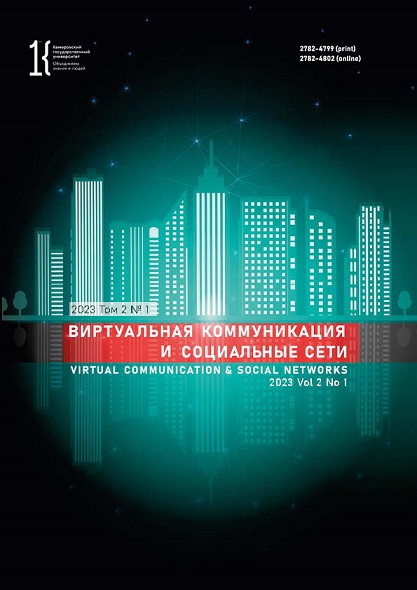from 01.01.2020 until now
Kemerovo State University
Kemerovo, Russian Federation
This paper describes the linguo-didactic prospects of using the method of interactive medical calendar to develop an artificial language environment for students who study Russian as a foreign language. It features classifications of medical calendars, their receptive properties, and experience of using them as a linguo-didactic genre in teaching Russian. The authors designed an interactive medical calendar that develops a professional medical jargon in non-Russian speakers at medical institutes. The method proved to be an efficient multimedia tool that unites the realities of medicine and language learning in a new context. It promotes learning by doing and out-of-class practice. The calendar allows non-Russian speakers to use professional terms and activates theoretical knowledge while developing digital skills. It also improves the skill of cross-cultural contacts, encourages informal communication, individualizes the learning process, and increases motivation in mastering both the medical profession and the Russian language. The method of medical calendar is a simple genre that facilitates the academic process of learning Russian as a foreign language by adding new activities and information.
artificial language environment, interactive calendar, Russian as a foreign language, medical Russian, teaching about science style of language, Internet studying, content and language learning (CLIL)
1. Atroshenko O. V. On the history of lexicographic treatment of chrononyms. Voprosy onomastiki, 2014, (1): 96-115. (In Russ.) EDN: https://elibrary.ru/TFLUQN
2. Bogacheva A. V. Methods for creating artificial language environment in the classes of Russian as a foreign language. Baltic Humanitarian Journal, 2021, 10(2): 34-37. (In Russ) https://doi.org/10.26140/bgz3-2021-1002-0006
3. Gonareva N. O., Afanas'ev V. V. Using the Calendar Android application in the process of teaching Human Anatomy at a medical university. Medical education of the XXI century: development of the University 3.0 model: Proc. Intern. Sci.-Prac. Conf., Vitebsk, 1 Nov 2019. Vitebsk: VSMU, 2019, 230-233. (In Russ.) EDN: https://elibrary.ru/TXRKEO
4. Zykov O. P., Ryabova T. V. First domestic secular calendars and their relationship to journalism. Bulletin of the Adyghe State University. Ser.: Philology and the Arts, 2013, (4): 183-188. (In Russ.) EDN: https://elibrary.ru/SABAHN
5. Kuznetsova E. A. Forming "artificial language environment" in the frame of professionally-oriented teaching foreign languages. Vestnik AmGU. Seriya Gumanitarnye nauki, 2017, (78): 170-173. (In Russ.) EDN: https://elibrary.ru/ZNHVDF
6. Nebesnyuk U. A. The history of a calendar as a cumulative text of mass media in the ethnic culture of Germany. Bulletin of Udmurt University. Series History and Philology, 2019, 29(6): 976-981. (In Russ.) https://doi.org/10.35634/2412-9534-2019-29-6-976-981
7. Ryauzova O. Yu., Bulakh E. A. Potential of virtual excursions in teaching students in the classroom on RFL. Pedagogika iskusstva, 2021, (3): 79-88. (In Russ.) https://doi.org/10.34897/IACS.2021/64.35.010
8. Smelyagin A. I. New stable calendars. Science. Engineering. Technology (polytechnical bulletin), 2016, (3): 17-25. (In Russ.) EDN: https://elibrary.ru/YSPMEL
9. Surina V. N., Kameneva V. A. Electronic event calendar. Genre characteristics. Bulletin of Chelyabinsk State University, 2014, (16): 132-134. (In Russ.) EDN: https://elibrary.ru/SZDKGR















